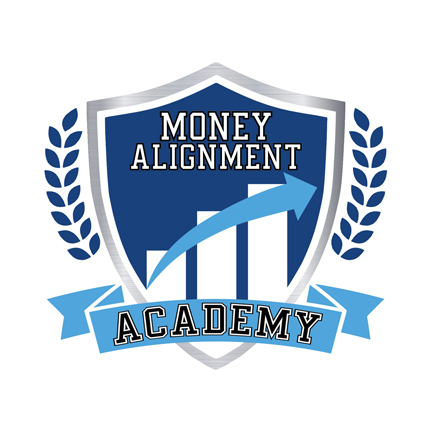Defined contribution plans are a great place to save for retirement. In fact, it’s what they’re designed for.
Different types of defined contribution plans are plans that receive special tax treatment from the IRS to incentivize people to save money for the long-term. The government doesn’t want us to get to retirement age and not have any money saved, so they make these types of plans available.
Examples of defined contribution plans are 401(k)s, 457 plans, IRAs and Roth IRAs.
The primary difference between defined contribution and defined benefit plans (pension plans) are who makes the contribution. With traditional pension plans, the employer would make contributions to the plan on the employees’ behalf. With 401(k)s, employees make their own contributions and the employer has the option to make matching contributions on behalf of the employee.
These plans benefit organizations by strengthening their ability to attract and retain high-quality employees. They benefit employees by offering them the ability to save higher amounts than IRAs or Roth IRAs.
Despite the many benefits, just over half of American employees have access to a 401(k), and only 32% of Americans invest in them.
From my perspective, one of the main drivers behind those numbers is complexity. The financial services industry has failed businesses and employees by making these plans cumbersome to implement, and difficult to understand.
I spend a lot of time doing the opposite; trying to make them simple to implement and easy to understand. Over the 20+ years I’ve spent working with 401(k)s, I’m constantly trying to get better at explaining things.
I’ll cover the three key areas companies need to pay attention to.
Overview of topic –
- Plan governance
- Plan administration
- Plan understanding and utilization
- Getting started
Let’s get started.
Plan governance
The organization making the retirement plan available is called the plan sponsor. A plan sponsor has certain obligations and must make sure they meet them in order to stay in compliance.
Plan governance is often used to scare companies into paying for expensive and oftentimes, unnecessary protections.
Here’s the bottom line: to stay in compliance, the plan sponsor must put in place a process to monitor the plan, follow that process, and document it.
Most 401(k) providers can provide you with checklists of everything you need to be doing to position yourself for success.
Should you choose to work with a professional to help you with the plan, they can also help with your plan governance. If the 401(k) provider or advisor you’re working with are unable to help you, you’re talking with the wrong people.
Plan administration
There are a lot of moving parts with 401(k) plans, and the biggest mistakes often occur with the timing and movement of money.
Today, most plan providers have the ability to seamlessly integrate with most payroll providers. This makes managing contributions a lot easier on the people who are managing the plan from a payroll standpoint.
When selecting your 401(k) provider, I recommend you select a company that can be both the plan recordkeeper (meaning they hold the money, investments and keep track of everyone’s account) as well as the TPA (the third party administrator ensures the plan is in compliance with regulations). When the recordkeeper is also the TPA, it’s referred to as a “bundled” solution.
While there can be benefits to having a TPA separate from the recordkeeper, I prefer the ease of a bundled approach. Having one person to call when trying to get information or make changes is often better than two.
Plan understanding and utilization
Now, let’s talk about actually using the plan. As I mentioned at the top, too few Americans have access to 401(k)s, and of those who do, not enough are taking advantage of them.
This is the case for a lot of reasons, and a brand industry referred to as “financial wellness” has been created to bridge that gap.
We’ve all heard the saying “You can lead a horse to water, but you can’t make it drink.” Should you decide to become a plan sponsor and offer a 401(k) to your employees, you’ll experience this frustration.
While there’s no magic bullet to solve this problem, the correct approach is to embrace incremental change.
Step one is making the plan available. Step two is bringing educational resources to your employees so they can better understand how the new plan fits into their overall financial situation. Step three is to consistently make new and different learning opportunities available.
Getting started
Once you’ve decided you’re ready to move ahead and to implement a 401(k) plan, you’ll begin looking at providers.
There are a lot of great financial companies who have been doing this for a long time. There are massive payroll companies who also do a ton of 401(k) plans. And there are upstart financial technology (FinTech) companies driving down the cost of plans.
I think there are high-quality, viable options at every level, and you’ll get what you pay for.
Choosing a low-cost option may get you a fine plan, but poor customer service. Opting for a legacy brand may get you name recognition and great service, but also a big price tag.
I’m biased, but I think partnering with a 401(k) Advisor to help you in your process from start to finish makes a lot of sense. An advisor can help you select the provider, implement and monitor your plan, and work with your employees so they can get the most out of it.
Conclusion
A 401(k) is an important and impactful employee benefit. It can make the difference in helping your organization attract and retain the best talent, and help your people to one day become financially independent.
Good luck on your journey and let us know how we can help.
Is a 401(k) right for your organization? What about a Financial Wellness program?
Connect with one of our Certified Partners to get any question answered.
Stay up to date by getting our monthly updates.
Check out the LifeBlood podcast.

